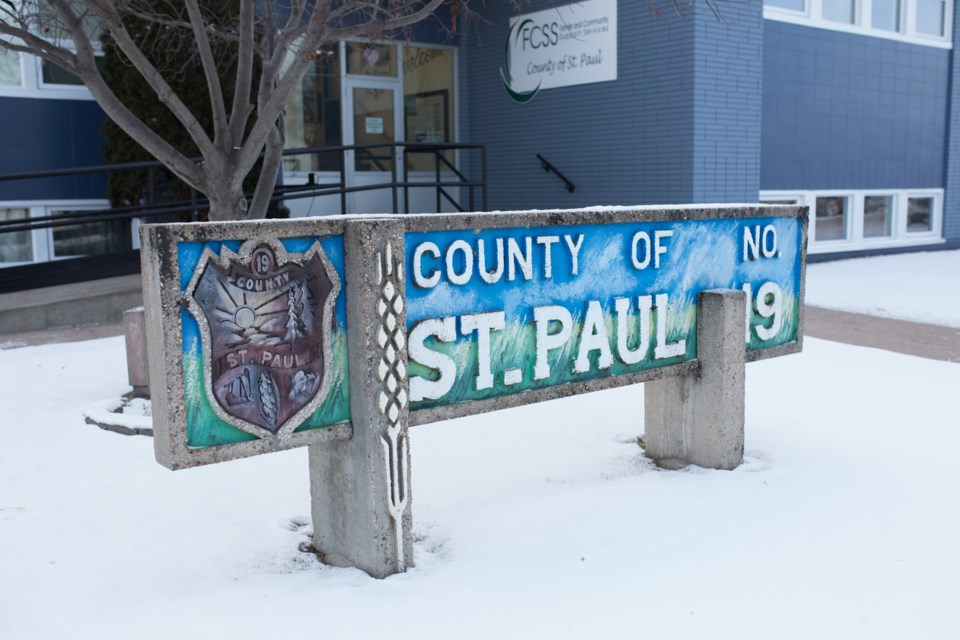ST. PAUL - The County of St. Paul is equipped to cushion the blow delivered by the pandemic, a struggling economy, and a reduction in tax revenue from industrial properties at least for the short-term anyway, according to Reeve Steve Upham.
However, with the provincial government’s plan to reduce Municipal Sustainability Initiative (MSI) funding by 25 per cent beginning next year, together with an anticipated reduction in future years to the province’s Strategic Transportation Infrastructure Program (STIP), building and maintaining core infrastructure, especially roads and bridges, in the county will become that much more challenging following 2021.
County council signed off April 13 on a $38 million budget, buoyed by a $1.9 million transfer in from reserves, resulting in a small surplus of $14,542. Of the total budget, $9 million is capital expenditure.
“The pain that has been felt by industry and by people in general with COVID and compounded pricing issues certainly rubs off on the work the county does. We’ve seen a major reduction on oilfield linear mechanical assessment which has impacted our numbers,” Upham said in an interview with Lakeland Today.
The County is anticipating $1.8 million less in tax revenue on Designated Industrial Property this year with the total assessed value falling to $7.6 million from $8.5 million the previous year.
“At the end of the day, over the last four or five years we’ve been managing in a very fiscally responsible way, I believe, so we’re equipped to cushion the blow in the short term,” Upham said.
But County ratepayers will see an increase in the mill rate on their tax notices in June. With the province’s move to download some policing costs on to rural municipalities and small towns under 5,000 population, the County is looking at a $250,364 bill that it has passed on to ratepayers resulting in an increase in mill rates. By 2024, that policing bill is anticipated to grow to over $500,000.
“At this point, we do not know if the increased funds paid by the County will result in an increased number of police officers in our area,” CAO Sheila Kitz noted in her budget narrative.
The residential municipal mill rate moves to 4.30 mills up from 4.25 last year. The total assessed value of residential property in the county is just over $877 million for a total tax value of $3.8 million, up slightly from last year’s $3.7 million. The non-residential, machinery and equipment municipal mill rate increases to 19.0 mills from 18.94 mills. The farmland rate, which is under provincial jurisdiction, moves up slightly to 13.67 mills from 13.63 mills last year. The total assessed value of farmland in the county is $73 million and yields close $1 million in tax revenue for the municipality’s operations.
Moving forward, “the County will be looking at all of our levels of service and spending to ensure we are living within our means and providing the needed services to our residents,” Kitz stated in the budget summary, suggesting provincial government decisions have and will impact the County and could translate to tax increases or reduced services and community support.
The County was able to secure almost $2.9 million in MSI funding for capital projects this year, but with word from the province that will drop significantly in future years, the ability of the County to keep up with the costs of municipal infrastructure will be more challenging.
Upham continues to be concerned about the UCP government’s move to take oil and gas property assessment in-house and out of the hands of municipalities, describing that as the biggest challenge facing the County.
“The assessment is being handled within house by the government rather than us doing it and I think to a certain extent it’s done at the will and whimsy or the leverage and lobbying of the oil industry. We are not getting what we should be getting for properties that cost us a lot to maintain the road infrastructure,” he said.
“There’s a reason why industry is taxed the way it is and I don’t think government had a full understanding of this before they changed some of these formulas and in the way properties were assessed. So, we are struck feeling the pain and waiting for the next year’s drop in assessment . . . I believe there’s going to be some more bad news to come for us from that, so those are our biggest threats moving forward.”


